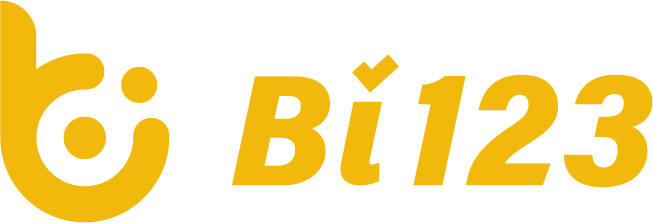
eCash
- #Governance
- #Binance BUSD
- 0.000047835
- $124.06M
- $946.52MRank #100
- 19,787.21B
Similar News
More Info- 06-04 10:00
The Binance World Championship Special: Trade $100 Each on Convert, Spot & Futures To Win...
- 06-03 22:00
MiCA Stablecoin Rules Implementation Announcement
- 06-03 10:15
Word of the Day: Test Your Knowledge on Life in Binance to Earn Binance Points...
- 05-31 15:00
Updates on Minimum Order Size for Spot and Margin Trading Pairs (2024-06-07)
- 05-30 21:28
Binance Futures Will Launch USDT-Margined TURBO Perpetual Contract With Up to 50x Leverage
Market Signal
More InfoCryptocurrency Calendar

NO DATA
What Is eCash (XEC)?
[eCash] (XEC) is the rebranded version of [Bitcoin Cash ABC] (BCHA), itself a [fork] of [Bitcoin] (BTC) and [Bitcoin Cash] (BCH). It calls itself a “[cryptocurrency] that’s designed to be used as electronic cash.” eCash strictly aims to be a means of transaction used to pay for goods and services. The coin was rebranded on July 1, 2021, and has since tried to distinguish itself from its predecessor. The base units of eCash are called “bits” and replace the unwieldy decimal places of Bitcoin Cash ABC. Instead of sending 0.00001000 BTC, you would send 10 bits with eCash. ECash integrates a [proof-of-stake] (PoS) [consensus] layer called “Avalanche,” which is not to be mistaken for the blockchain [Avalanche] (AVAX). Upon rebranding, eCash announced that it would convert all BCHA coins to XEC at a ratio of one to one million.
The cryptocurrency’s developers have set their sights on three main improvements:
* Scaling transaction [throughput] from 100 transactions per second to more than five million transactions per second
* Improving the payment experience by reducing transaction finality time
* Extending the protocol and establishing fork-free upgrades
Who Are the Founders of eCash?
[eCash] (XEC) is led by its lead developer Amaury Sechet, who was the lead developer of [Bitcoin Cash] (BCH) and forked that [blockchain] to establish the predecessor of eCash, [Bitcoin Cash ABC] (BCHA). That fork happened on November 15, 2020. Sechet then decided to rebrand Bitcoin Cash ABC to establish a new brand identity for eCash, explaining that a reduction of decimal places would help with the adoption of the coin:
“No other money has eight decimal places. Why should crypto? Cryptocurrencies with a lower unit price also enjoy higher bull market appreciation. Because the eCash team is incentivized by both tech and price improvement, this improvement was a no-brainer.”
Sechet was highly active in the development of Bitcoin Cash, leading its initial fork away from Bitcoin in August 2017, its continuation after [Bitcoin SV] (BSV) was forked from it in November 2018, and its most recent fork from Bitcoin Cash in November 2020. Before his involvement in cryptocurrencies, he was a software engineer at Facebook and a lead developer at Stupid D Compiler.
What Makes eCash Unique?
The developers of [eCash] (XEC) intend the coin to support [Ethereum Virtual Machine] (EVM)-compatibility and to be interoperable with the [decentralized finance] (DeFi) sector on [Ethereum] (ETH). For the coin to become successful, eCash’s developers intend to fulfill five core missions:
* Ensuring anonymous transactions
* Ensuring the immutability of transactions
* Guaranteeing that transactions remain almost free
* Enforcing globally secure transactions with a finality of fewer than three seconds
* Designing the coin’s infrastructure as a public good, funded via its social contract
To achieve this, the developers of eCash have laid out an ambitious roadmap, with plans to have:
* Canonical transaction ordering to enable scalable block processing
* Schnorr Signatures to enable batched signature validation
* Faster block propagation through graphene or other
* UTXO commitment with blockchain pruning and faster initial sync
* Merklix-Meta Tree to enable scalable block processing
* Adaptive block sizes to support market-driven growth to 1TB blocks
These highly ambitious solutions would propel eCash to 50 transactions per user per day for up to 10 billion users.
Related Pages:
Check out [Ripple] (XRP) — a payment-oriented cryptocurrency
Check out [Stellar] (XLM) — another cryptocurrency focused on payments
Read our [deep dive into the OMG Network]
Get the latest crypto news and latest trading insights via the [CoinMarketCap blog]
How Many eCash (XEC) Coins Are There in Circulation?
There is no [tokenomics] of [eCash] (XEC) but it follows many of the same rules already established for [Bitcoin] (BTC). It shares Bitcoin’s supply and distribution model, meaning that every 210,000 [blocks], approximately every four years, [miner] rewards are cut in half. ECash has the same supply cap as Bitcoin of 2.1 quadrillion [satoshis], yet instead of those 2.1 quadrillion SATS being divided by 100 million to yield 21 million BTC, it was divided by 100, yielding 21 trillion XEC. The reason for this is simply that it is easier for users to mentally grasp integers and this decision aligns with the coin’s goal of mass adoption.
How Is the eCash Network Secured?
In contrast to the [Bitcoin Cash ABC] (BCHA) network, which is secured using a [proof-of-work] (PoW) [consensus mechanism], the developers of eCash plan to add proof-of-stake (PoS) in order to speed up transactions. What they term “Avalanche post-consensus” would see enhanced security and fork-free upgrades and allow for advanced opcodes thanks to enhanced script capability. The Avalanche layer will be added on top of the existing PoW in order to leverage the benefits of both.
XEC is not an ERC-20 token, it is its own blockchain similar to Bitcoin (BTC).




